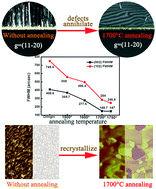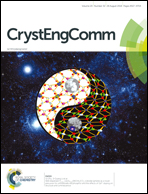Defect evolution in AlN templates on PVD-AlN/sapphire substrates by thermal annealing
Abstract
AlN is the key material to obtain high performance ultraviolet optoelectronic and microelectronic devices. To obtain high quality AlN, a high temperature annealing method is employed. However, the mechanism of thermal annealing on improving the quality of AlN needs to be further studied. In this work, we focus on the influence of high temperature thermal annealing on the defect evolution in AlN and study the mechanism. AlN epilayers grown by metal–organic chemical vapor deposition (MOCVD) were annealed at different temperatures. The results showed that the full width at half maximum of the (0002) and (10−12) planes for the AlN templates decreased to 147 and 246.8 arcsec after thermal annealing at 1750 °C. Meanwhile many voids appeared in the physical vapor deposition AlN layer. To reveal the mechanism of thermal annealing on improving the quality of AlN, the AlN grown by physical vapor deposition (PVD) was also annealed by high temperature annealing. Atomic force microscopy results showed that realignment and coalescence occurred in the PVD-AlN, which gave the evidence for defect reduction in AlN by the thermal annealing method as well as the existence of AlN voids. The results presented here can not only provide a deeper understanding of the mechanism of the thermal annealing, but also offer a direction to obtain high quality AlN templates.



 Please wait while we load your content...
Please wait while we load your content...